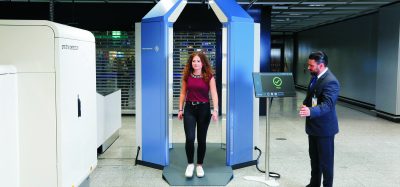ACI highlight the importance of reliable and effective data-sharing
- Like
- Digg
- Del
- Tumblr
- VKontakte
- Buffer
- Love This
- Odnoklassniki
- Meneame
- Blogger
- Amazon
- Yahoo Mail
- Gmail
- AOL
- Newsvine
- HackerNews
- Evernote
- MySpace
- Mail.ru
- Viadeo
- Line
- Comments
- Yummly
- SMS
- Viber
- Telegram
- Subscribe
- Skype
- Facebook Messenger
- Kakao
- LiveJournal
- Yammer
- Edgar
- Fintel
- Mix
- Instapaper
- Copy Link
Posted: 18 June 2019 | International Airport Review | No comments yet
ACI highlighted that reliable and effective transmission of data across all airport stakeholders is key to both efficiency and improving the passenger experience.


ACI World has emphasised that the reliable and effective transmission of data across all airport role players is crucial to improving operational efficiency and the passenger experience.
Speaking at the Civil Air Navigation Services Organisation (CANSO) Global ATM Summit and 23rd AGM 2019, ACI World Director General Angela Gittens highlighted the need for enhanced coordination among aviation stakeholders.
Gittens commented: “Reducing delays, and increasing resilience in the wake of disruption, requires coordination among airports, airlines, ground handlers and air traffic controllers to improve decision-making.
“Airport collaborative decision making (A-CDM), a process in which all airport role players share information so that each organisation has a more complete operational picture, is an important enabler of effective and timely resolution of issues. A-CDM can improve flow control and optimise the capacity of runways, terminals, gates and airspace so that aviation can continue playing a major role in driving sustainable economic and social development.”
Jeff Poole, Director General CANSO, said partnership between all aviation stakeholders is vital for safe, efficient and cost-effective airspace. “A-CDM plays a vital role in improving airspace efficiency. It helps to optimise the use of aerodrome resources, reduce arrival and departure delays, and improve predictability during regular and irregular operation.
“When combined with air traffic flow management (ATFM), both processes help to balance demand against capacity and increase operational coordination between aviation stakeholders, creating a safer, more efficient flow of traffic. These are just two, out of many, examples of airports, airlines and Air Navigation Service Providers working closely together to improve airspace efficiency and reduce delays.”
To capitalise on all the potential brought by data, a common vocabulary is needed. The Airport Community Recommended Information Services framework (ACRIS) has been developed by ACI to provide a data exchange structure in the aviation community.
Gittens continued: “ACRIS provides an environment where airports can share data with their partners in a standardised and seamless manner. ACI is also working closely with the IATA to ensure airline and airport data standards are harmonised; this work is expected to continue and evolve as data comes to the forefront of digital transformation, which is becoming a core capability and a necessity to meet the capacity demands of the future.”
Gittens also emphasised that reducing the nuisance of aircraft noise should remain a key priority for all aviation stakeholders. In 2015, ACI and CANSO published Managing the Impacts of Aviation Noise, which examines the challenge of aviation noise and describes methods that airport operators and Air Navigation Service Providers can use to manage and reduce its impact. ACI and CANSO will also have a new joint publication on the topic of performance-based navigation implementation and noise management to guide memberships.
“The challenge we collectively face is in accommodating future growth in a safe, secure and sustainable way, both environmentally and economically, and continuing to deliver the best customer experience,” Gittens said. “Looking at the complete picture involving all airport role players is a necessary ingredient in our common goal.”
Related topics
Aeronautical revenue, Air traffic control/management (ATC/ATM), Big data, New technologies, Noise abatement, Regulation and Legislation


















